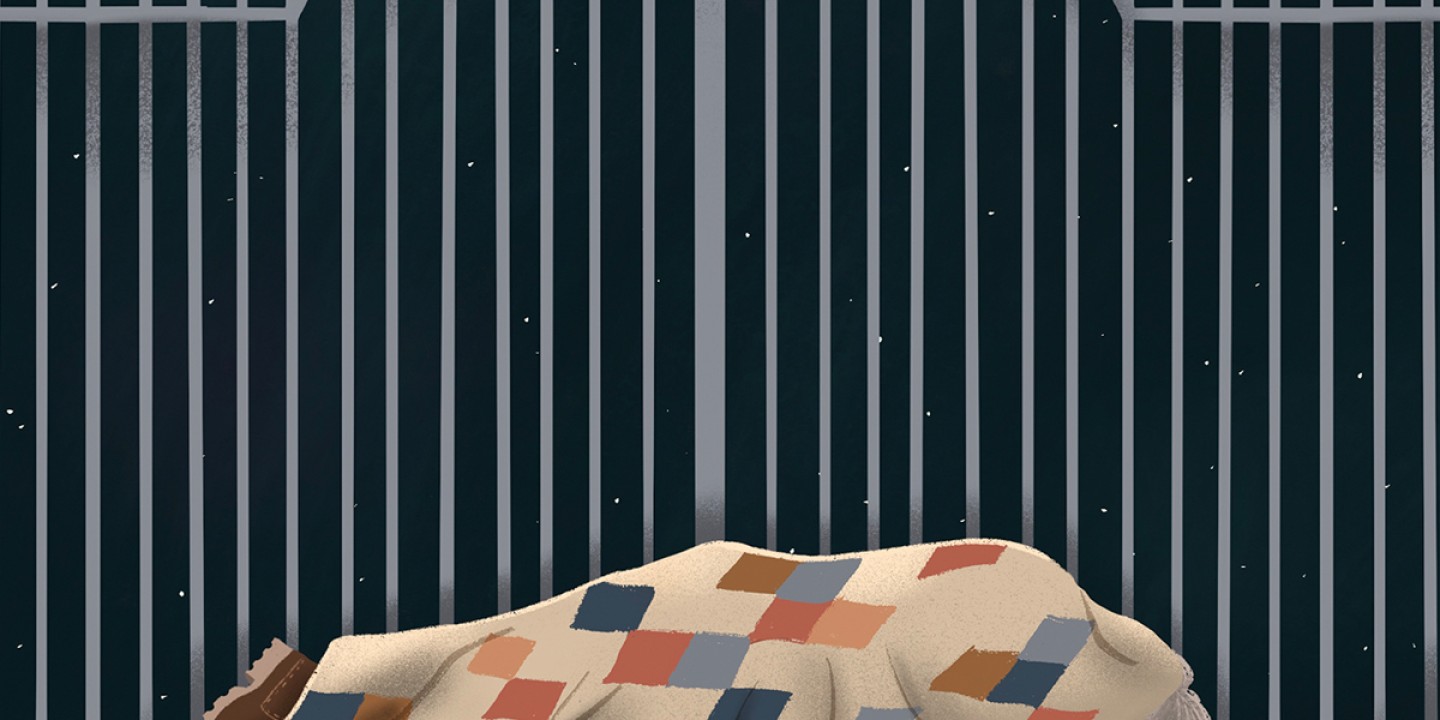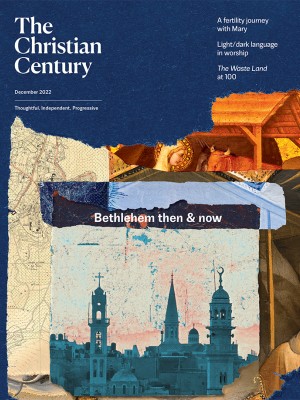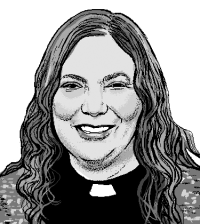
My granddaughter Mia, who had just turned four, overheard me talking on the phone. Someone had drunkenly fallen asleep at the top of the outside steps leading down to our church’s shelter entrance. His body was blocking youth with no other place to sleep from being able to enter and access their beds.
The plight of people without homes is nothing new here in New York City, but it was new to Mia, who lives elsewhere. Somehow she gathered from my end of the conversation that someone was sleeping in an odd place. “Oma, where is the man sleeping?” I told her. “Why is he sleeping there?” I told her, more or less. Mia was silent. I figured she’d moved on, but no, she was considering this unusual fact. “Oma,” she finally said, “it was a cozy step.” The top step of the stairway had to be cozy, because Mia could not imagine anybody sleeping out in the cold on a hard rectangle of concrete. As anyone with a young child in their life knows, more questions ensued.
Read our latest issue or browse back issues.
Mia herself beds down under a wavy sea of mermaids and fish, and when the lights are out she can look up and see a heaven of stars stuck onto her ceiling. One night when I was putting her to bed, the electricity went out. “Oma, the electricity of stars never goes out, does it?” she asked. I told her it doesn’t, unsure if stars could be said to have electricity and deciding it was not the moment to discuss black holes. I was lying on the covers next to her. “Oma, I have a mystery question. What does God look like?”
I was surprised she knew to use the word mystery. Mia doesn’t attend church or synagogue, so I treasure these times when we can consider mysteries and pray together. But soon she interrupts to pray for people without homes. Mia knows that I am retiring and moving into a house across the street from her. She’s been to our present home many times. “Oma, when you move to your new house, maybe the people without homes can live in your old house.” Mia doesn’t know about parsonages, and when I explain it, I see that she is deeply disappointed. Would that others shared her persistent efforts to figure out solutions.
I remember my own awakening to the world’s injustice at around the same age. Like Mia’s, my early childhood was a place of safety. I bedded down under warm covers with my stuffed animals, and my parents would come check if I wondered about a monster in the closet. I remember the exact spot where I stood under the cuckoo clock in our very yellow kitchen (it was the late ’50s) and asked my mother, “Are robbers real?” I don’t remember what prompted the question, but in asking I had already guessed the answer. I remember the chill spreading through my body as she told me. I still believed in Santa Claus and the Easter Bunny. There were never monsters in the closet, but now there might be a thief in the night. A few years later my best friend was stolen away, lost to some mysterious congenital disease.
In Advent, the church reminds us that we straddle the world as it is and the world as it should be, never fully at home on either side. Yet Advent is the church season that feels most like home to me. I am always in sync with it. Our shelter is a temporary home. Most residents are transgender young people kicked out by their families, sometimes by their home countries. Recently we welcomed one of the many refugees shipped here from Texas. Just one—the rest of our beds were full. I once found comfort in the idea that if you save one life, you save the world, but these days that seems to be a very threadbare promise.
Supporting one person’s journey to permanent housing, or that of 10 or 50 or 500, is undeniably a good thing—and yet it does nothing for millions more. Nothing for the man roused and displaced from his un-cozy step. He didn’t fit the demographic to stay at our shelter. He didn’t want to go to a city shelter. Down the street, people looking for a place to rest could once sit on a long ledge, but it has now been outfitted with metal spikes to prevent that—one weapon in the arsenal of what’s now called hostile architecture.
When I arrived home from visiting Mia and her family, there was someone sleeping on the sidewalk in front of the church. Was it the same man who had bedded down on the step? Maybe, maybe not. In the fluorescent lights of the sidewalk shed protecting passersby from falling debris while our building is rescued from decrepitude, I saw something familiar: a quilt made by the sister of a church member. Her project of making quilts for our shelter residents was interrupted by end-stage pancreatic cancer, but she rallied and pushed through, insisting she would finish the quilts—and she did, with only a couple months to spare. One of our social workers saw a shelter resident named Raven come in, pull out her bed, and disappear with her quilt. Raven laid it on top of the man on the sidewalk. She’d decided he needed it more than she did.
One quilt won’t save the world, but it reminded me of the one who does, the one who will. Our Dayspring, our Morning Star, our home. What does God look like? A man on the step? A baby in a manger? Was it a cozy manger? It depends which commentary you read, but it doesn’t sound cozy from this vantage point. Nor from the hill of thieves when the stars refused to shine. Oh come, oh come, Emmanuel. Soon and very soon can’t come soon enough.






